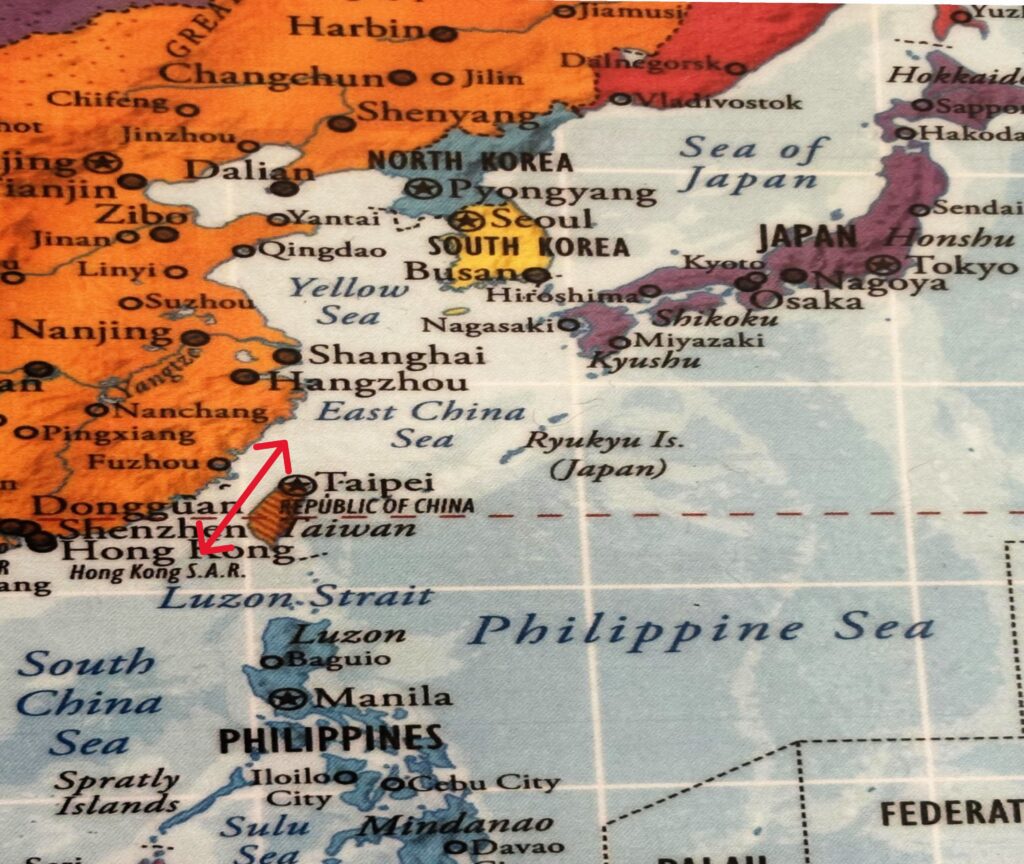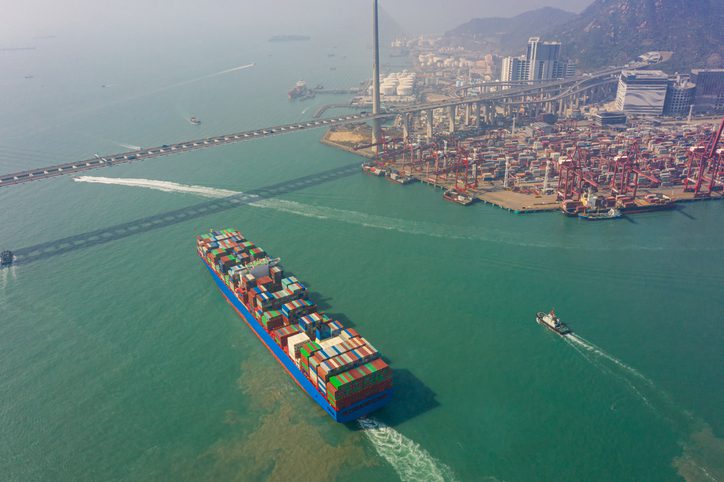#8 The Taiwan Strait: A Geopolitical Flashpoint and Global Shipping Artery


Introduction: The Taiwan Strait, a narrow body of water separating mainland China from the island of Taiwan. Far more than just a geographical feature, it represents one of the most significant geopolitical flashpoints in the world, with implications for global stability, trade, and energy security. As a critical maritime corridor linking the South China Sea to the East China Sea and the wider Pacific, the Strait is traversed daily by thousands of commercial vessels, including a substantial portion of the world’s merchant fleet and vital energy shipments. The intense strategic rivalry and military posturing within and around its waters highlight its indispensable, yet precarious, role in the global economy.
Geography – A Narrow and Contested Passage:
- The Taiwan Strait is situated between the southeastern coast of mainland China to the west and the island of Taiwan to the east.
- It connects the South China Sea (to the southwest) with the East China Sea and ultimately the Pacific Ocean (to the northeast).
- Its width varies significantly, ranging from approximately 130 km (81 miles) at its narrowest point to about 400 km (250 miles) at its widest.
- The average depth of the Strait is around 60 meters (200 feet), though it can be much shallower in coastal areas and deeper in certain channels, allowing passage for even the largest vessels.
- While seemingly wide at its narrowest, the presence of numerous islands and shallow areas throughout the Strait adds navigational complexity and strategic significance.
Key Facts & Importance:
- Global Trade Backbone: The Taiwan Strait is an absolutely essential artery for international commerce. While exact total trade values for 2024 are still being finalized, reports indicate that over one-fifth of global maritime trade by value continues to transit these waters annually.
- Massive Ship Traffic: It is one of the world’s busiest shipping lanes. On average, approximately 1,200 ships crossed the Taiwan Strait in a week in 2023, making it the second busiest of six major routes examined globally, with cargo ships accounting for 60% of total crossings. Ship crossings through the Taiwan Strait remained consistent throughout 2023 and early 2024, unlike other passages that saw significant disruption.
- Container Shipping Hotspot: It continues to be a crucial highway for container ships. While precise 2023/2024 percentages for the entire global fleet are pending, sources from late 2023 still highlight that nearly half of the world’s container ships pass through the Taiwan Strait annually.
- Indispensable Energy Lifeline: A significant portion of East Asia’s energy imports from the Middle East and Africa, including crude oil and LNG, must transit the Taiwan Strait. For instance, over 95% of Japan’s crude oil and 65% of South Korea’s from the Middle East rely on this passage. There have been no major changes to trends in ship crossings through the Taiwan Strait for tankers and cargo ships from January 2022 to April 2024, indicating continued reliance despite regional tensions.
- Taiwan’s Economic Lifeline: Nearly all of Taiwan’s substantial trade, including its dominant position in advanced semiconductor production (over 90% of global supply), flows through ports directly adjacent to the Strait, making it existentially vital for the island’s economy. Taiwan reported its second-best foreign trade numbers in 2024, with exports growing 9.9% to US$475 billion and imports surging 12.2% to US$394 billion.
- Critical for Major Economies: Beyond China and Taiwan, the Strait is indispensable for key U.S. allies. More than 90% of South Korea’s maritime trade passes through the Taiwan Strait and the South China Sea, demonstrating a profound economic reliance. Any disruption would have monumental impacts far beyond the immediate region.
Geopolitical Considerations:
- “One China” Principle vs. Self-Rule: The fundamental geopolitical tension stems from Beijing’s “One China” principle, which asserts Taiwan is an inalienable part of the People’s Republic of China, and its stated goal of eventual “reunification,” by force if necessary. This clashes with Taiwan’s democratically elected government, which views Taiwan as a sovereign entity with its own distinct identity.
- Great Power Rivalry (U.S. vs. China): The Taiwan Strait is a central theater in the escalating strategic competition between the United States and China. The U.S. maintains a policy of “strategic ambiguity” towards Taiwan, providing defensive arms while not explicitly stating if it would intervene militarily in a conflict. This is often balanced with “freedom of navigation operations” (FONOPs) by U.S. and allied naval vessels through the Strait, which China frequently condemns as provocations, asserting its claim over the waters.
- Military Flashpoint: The Strait is subject to frequent military exercises and air/naval incursions by China’s People’s Liberation Army (PLA), aimed at intimidating Taiwan and signaling Beijing’s resolve. These activities significantly heighten the risk of miscalculation or accidental escalation, which could quickly spiral into a major international conflict.
- The “Silicon Shield”: Taiwan’s outsized role in the global semiconductor industry (producing over 90% of the world’s most advanced chips) creates a “silicon shield” – a strategic deterrence against a Chinese invasion. A conflict in the Strait would not only disrupt critical supply chains but also potentially destroy the very fabrication plants China might seek to control, causing an economic catastrophe far beyond the region.
- Regional Security Concerns: Japan, South Korea, Australia, and other Indo-Pacific nations view stability in the Taiwan Strait as paramount to their own security and economic well-being, as their trade and energy flows are heavily dependent on its unimpeded passage. Any conflict would draw in regional and potentially global powers, creating an immense humanitarian and economic crisis.
Maritime Hazards & Modern Challenges:
- Complex & Dangerous Operating Environment: The Taiwan Strait presents a highly challenging and dangerous environment for shipping. This stems from a combination of intense military activity (frequent exercises, naval presence, risk of accidental encounters) and its inherent navigational complexities, which include high traffic density, varying depths, and numerous islands.
- Threat of Blockade or Conflict: The looming threat of a Chinese blockade of Taiwan, or even outright military conflict, represents the ultimate hazard. Such an event would effectively halt shipping, leading to catastrophic global economic consequences, particularly for industries reliant on semiconductors and just-in-time supply chains.
- Adverse Weather Conditions: The Strait is also routinely subject to severe seasonal weather patterns, including typhoons, which bring severe storms and reduced visibility, further complicating safe passage.
